INFORMATION & PICTURE GALLERY FOR TEACHERS & STUDENTS
THIS IS PAGE TWO OF SIX
SUMMER:
Gardening (no pictures yet), Haying, Harvesting Wheat and Hoping for the Perfect Amount of Rain and Sunshine
After the popcorn and the soybeans have been planted and cultivated to get rid of weeds, the next thing we do is wait on Mother Nature, we can only pray for the proper amount of rain and sunshine.
We weed and water our garden in the summer. We also do haying. Below is a closeup picture of the grasses that are cut and dried and formed into bales for horses to eat during the winter. Common varieties of grasses grown in this area for horses include; Orchardgrass , Birdsfoot Trefoil, Crested Wheatgrass, Perennial Ryegrass, Timothy, Kentucky Bluegrass, Red Clover and Alfalfa. Alfalfa is not a grass but a legume and is high in protein. Just like candy, horses shouldn't eat too much of it
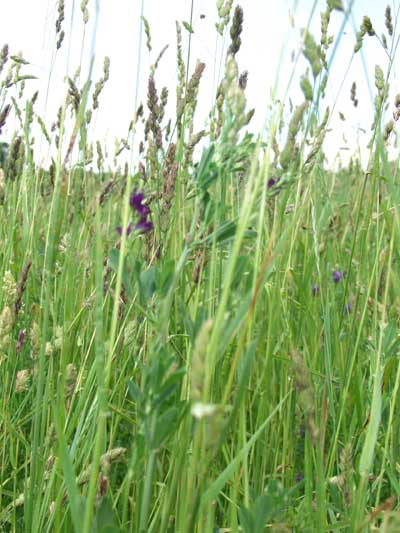
The tall grassessmell sweet and are a beautiful sight and birds use it for nesting.
It's haying time, so what is haying? Hay is grass that has been cut, dried, pushed into rows and picked up and run through a machine called a baler to make something called a bale. A bale has two strings which keep the cut and dried grasses in the bale intact. Our baler makes small square bales weighing around fifty pounds. Some balers make gigantic bales that need to be moved by machine, either square or round. Sometimes we do use our round baler to make large, round 6 foot long and 6 foot in diameter soybean straw bales. We need a machine with big forks to move them.
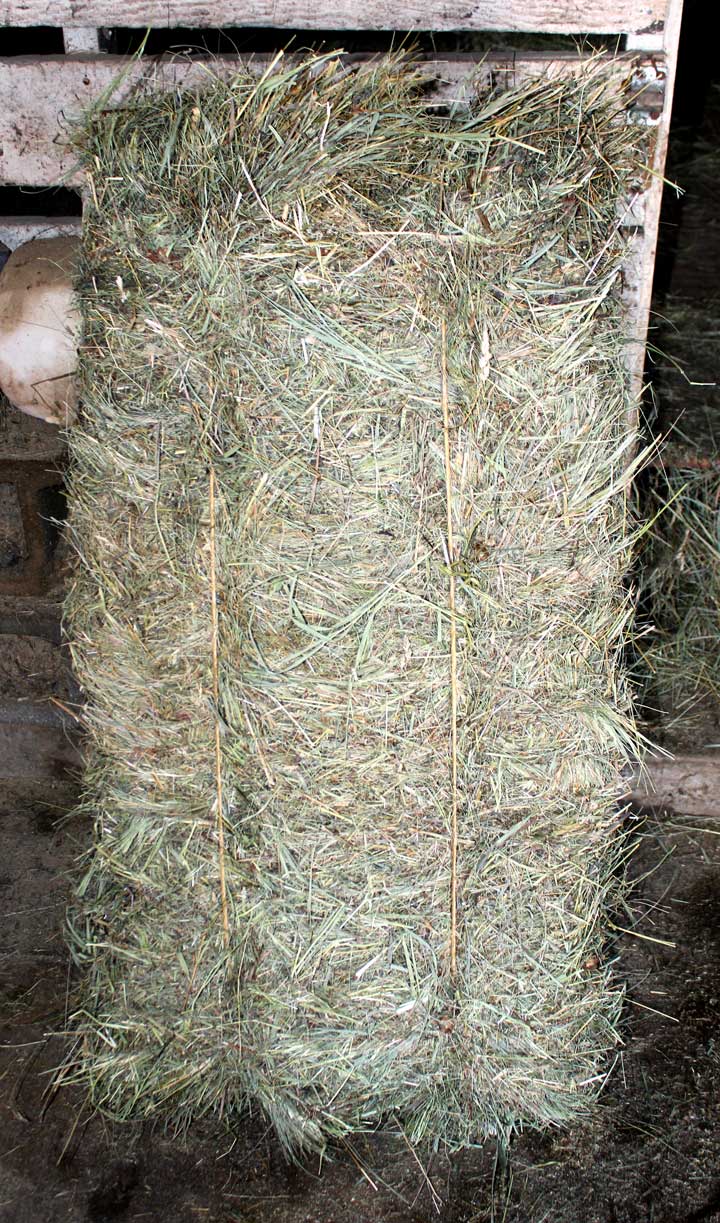
You can see two strands of the sisal twine around the bale. The sisal will decompose naturally if left to do so. Below you can see the cut edges of the bale. These bales are nice and greenish, no rain spoiled them. They are kept in a barn out of the sun, the sun would bleach them lighter, not as tasty for the horses.

The horses in this March picture are hoping that I will bring the bale out to feed them. The hay in the background has been spoiled by them pooping on it so I pushed it out of the way onto a pile.
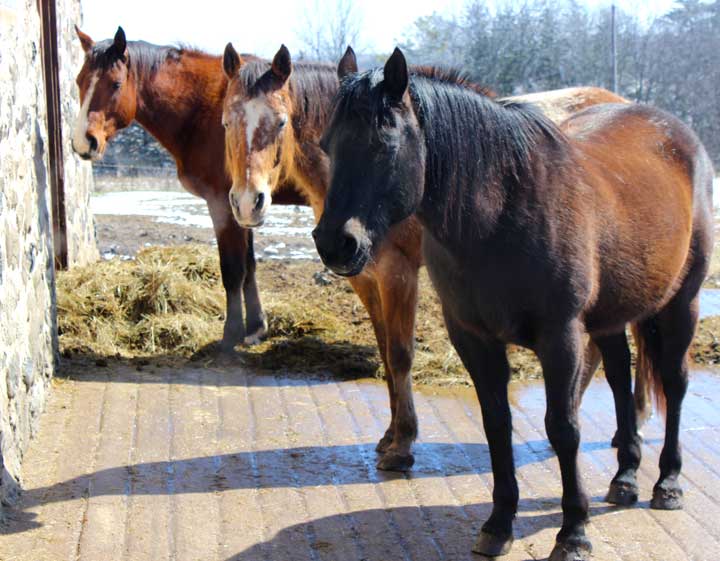
Below Christopher is cutting hay with our small mower pulled and powered by the tractor. Once the tall grasses are cut, they are dried by the sun and then raked into rows for the baler to bale. What happens if it rains on the drying cut hay? It's ruined! We always carefully watch the weather before cutting the hay.
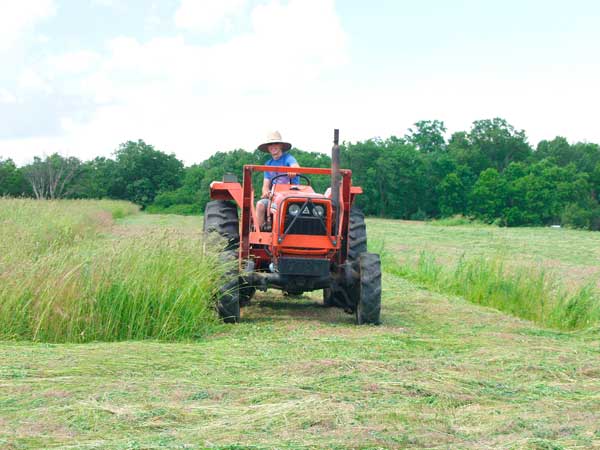
Next you can see the tractor pulling the baler, the baler pulls the wagon.The baler picks up the dried grasses and forms them into a bale. They move along in the baler until they reach the end where the baler has speeding belts and are then thrown into the wagon. The driver on the tractor can aim where the bales are thrown into the wagon by moving the direction of the belts.
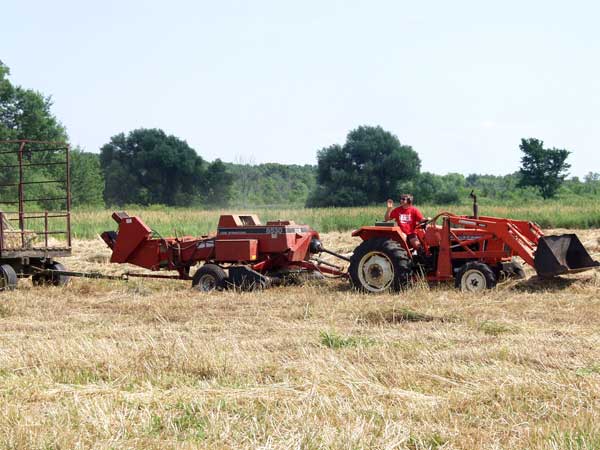
The mowed grass below looks yellowbrown. When the weather is dry in the marsh, we cut the tough marsh grasses which grow near water. (That hay is sold to landscapers to cover bare ground, it's not to feed animals.)
You can see Carl on the tractor aiming for the middle of the row of hay. The cut hay has been pushed into a row so the baler can take it all at once. The front bucket on the tractor puts some weight where it's needed. There is a lot of weight in the back. This is a small tractor pulling a big load in the marsh! It's a four wheel drive tractor which helps it pull this load.
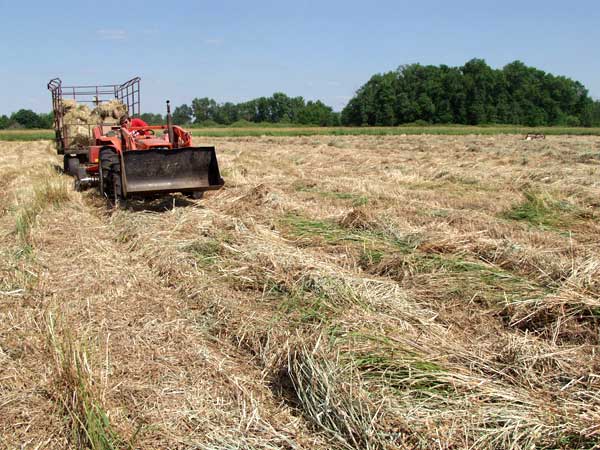
Always pay attention to the equipment: Sometimes we have to stop the baler and pull some of the hay out of the baler intake, it can be like if you tried to eat a whole hotdog with a bun all at once. Baling hay is very noisy so Carl wears some ear protection.
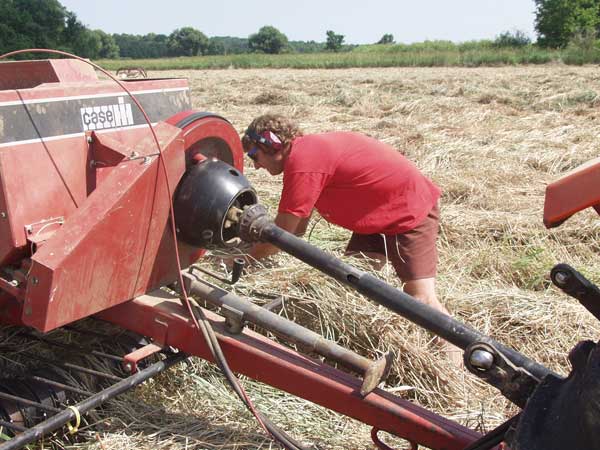
The bales below in the wagon are not stacked neatly, just thrown by the baler. Sometimes Carl has to be in the wagon to stack them. That way the wagon can hold more bales.
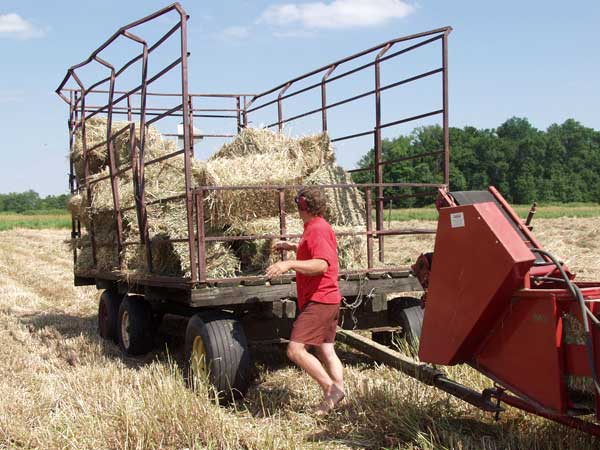
Wildlife all around us: The summer has other sights to see. Our back roads are narrow and quiet with few cars.
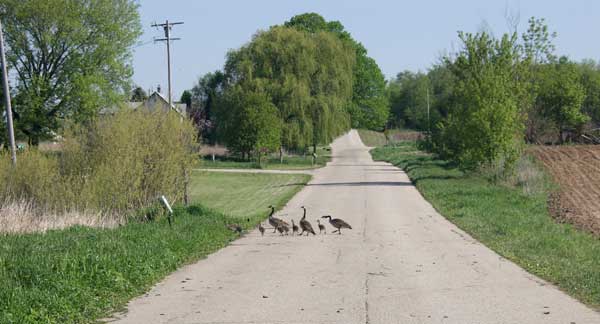
What are those birds and where are they going? See how well behaved the babies are? They are following along nicely.
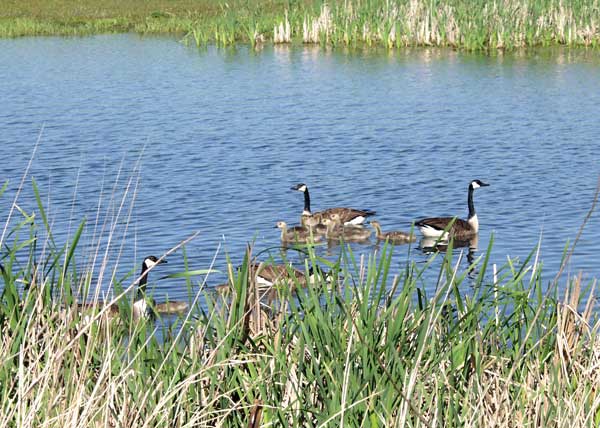
This pond is where the Canada geese were walking, just across the road. Guess what else likes the pond water...mosquitoes!

Soybeans Growing: The picture above shows soybeans in this field. They were planted with our No-Till planter. Notice last years organic matter under the plants. These are young and healthy looking soybeans, around the end of June.
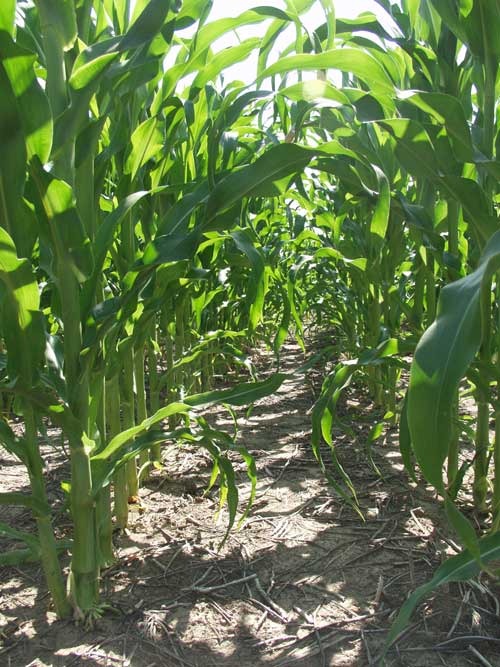
Popcorn Growing: If you're in the middle of the field, like I was, you'd smell the sweetness of the corn and the earthy warm soil. I took this crouching under the leaves looking down the row of popcorn. You would not believe how lovely the popcorn smells. Notice last year's soybean stubble in between the rows. The stubble is there to help protect the soil and becomes organic matter for next year's crop.
Winter Wheat Harvesting: Sometimes we grow winter wheat, it's planted in the late fall and harvested during the summer. It's called winter wheat because it stays in the ground all winter and ripens in the summer. What do people do with wheat?

Wheat is the grain that is made into flour for breads, cakes, pasta and
more. When we grow wheat, after it's harvested we bring it to our farm cooperative where
it's sold. Below is a closeup view of the mature grains which are
ready to be harvested, cleaned and processed to make flour.
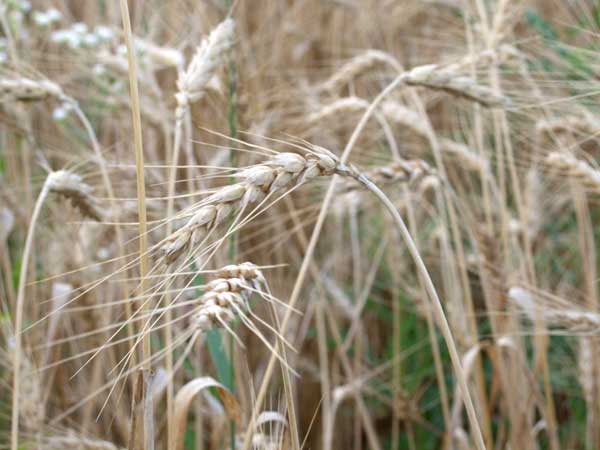
Below, Christopher is harvesting the wheat with our combine. Notice that the rotating head has supports keeping it rigid. This head always rides above the ground, the grains of wheat are at the top of the stalks. They are caught by the fingers of the head as it moves down the field. The grains of wheat are separated from the chaff inside the combine, the chaff is the part of the plant that we don't eat.
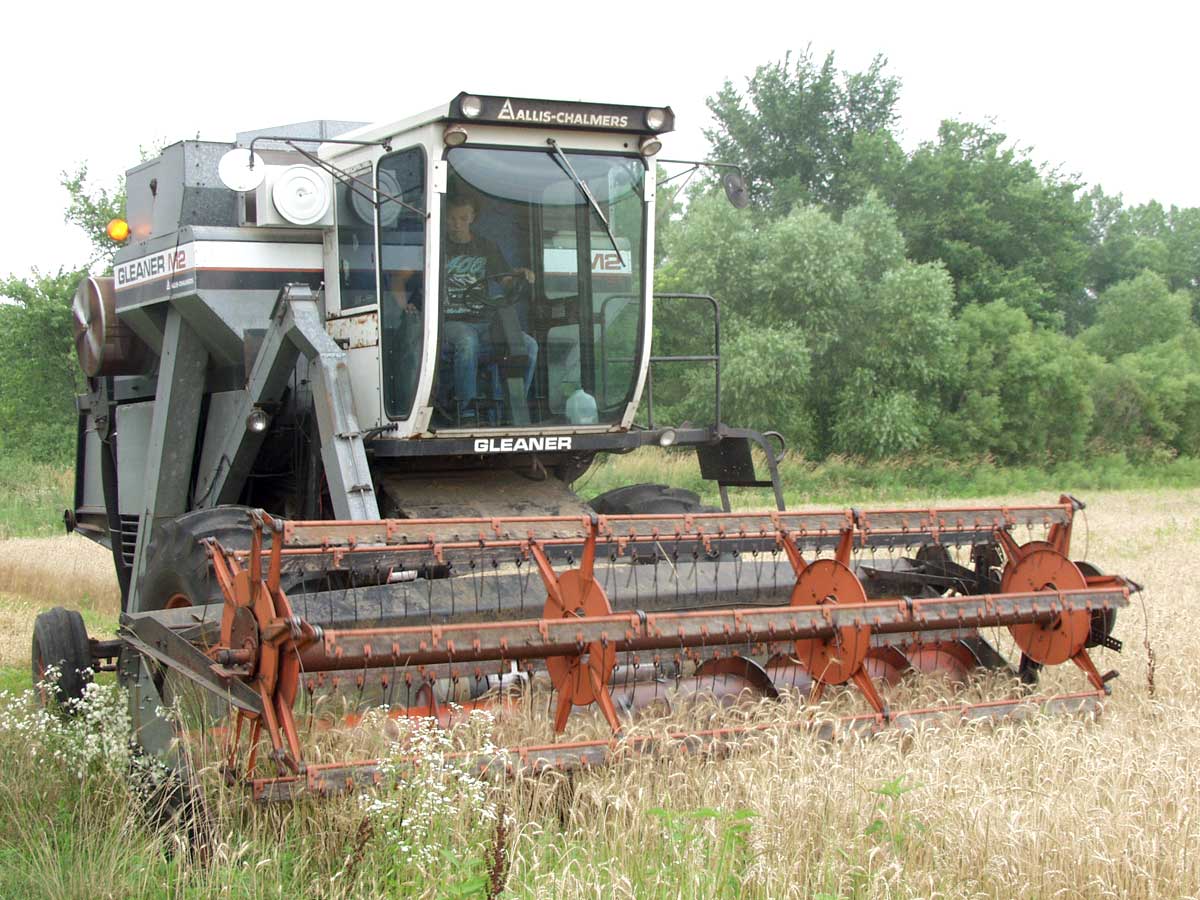
Below, Carl is checking the chaff, otherwise know as straw, coming out of the combine to make sure the combine is doing a good job. We don't want the grains of wheat that we eat to come out with the straw.
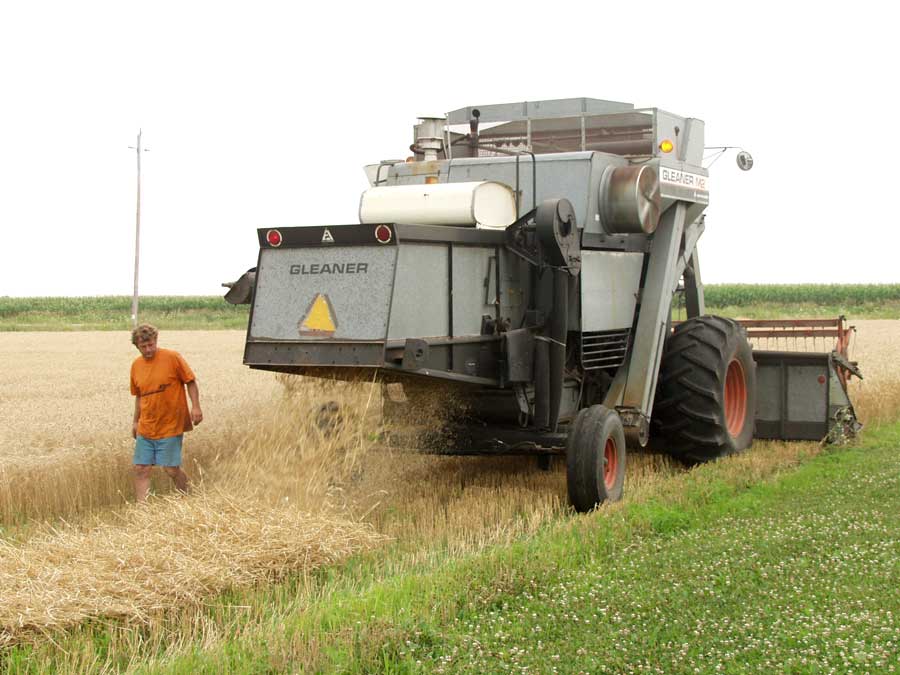
The straw we make into small bales using our baler. The straw bales are good for bedding for cows and horses. It's handy in the garden for mulch also. They look like hay bales but they are golden in color.
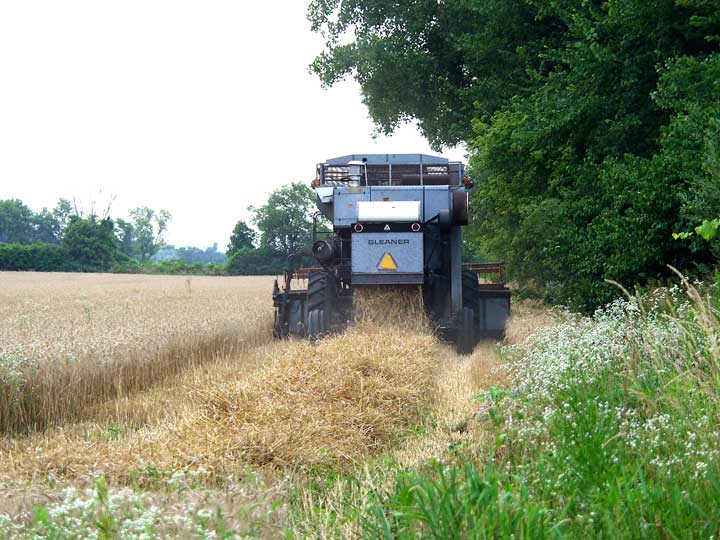
See how nicely the chaff lays when it drops out of the combine..
Summer has long days.
About the same time we are harvesting wheat the popcorn has tasseled out. What is the function of the popcorn tassel? As you can see, tassels look like skinny flower fingers at the top of the popcorn stalk. They grow prior to the ear forming. What does the tassel do?
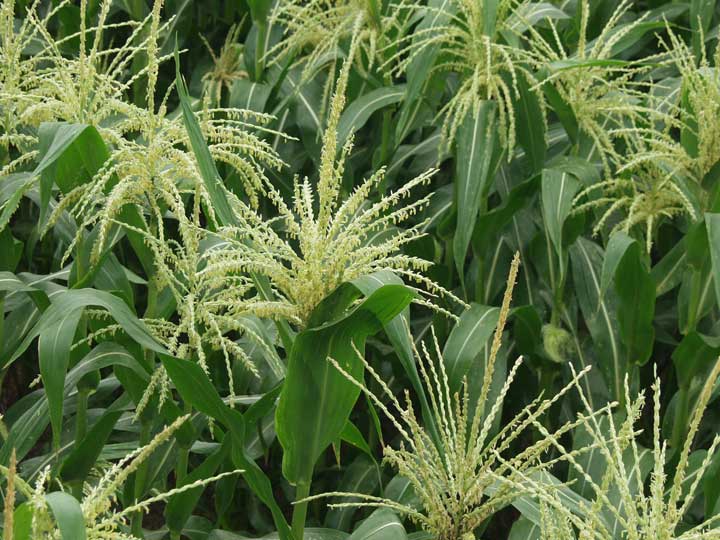
Here's the answer: The tassel produces pollen. Tassels are the male flower of the corn plant. The pollen is what causes the ear of popcorn to grow. Without pollination, there would be no kernels, just an empty cob. The pollen falls off the tassel and is blown by the wind to reach the silk of the ears. The silk is the female flower of the popcorn plant. Below you can see the tassels in more detail.
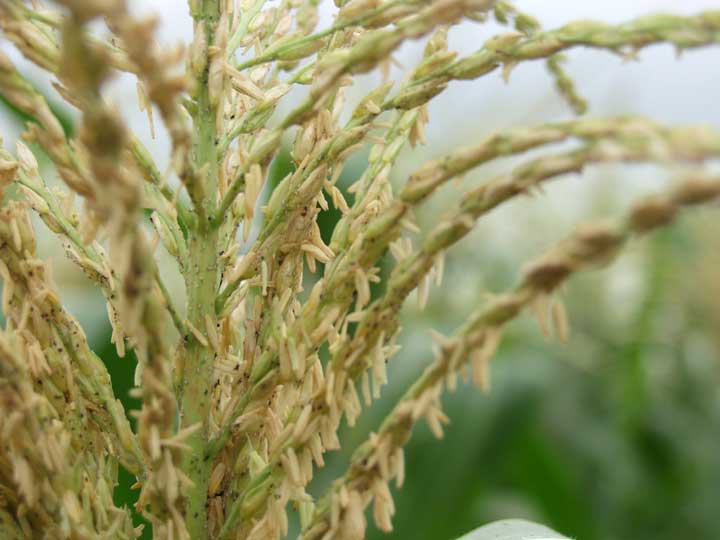
The smell of the popcorn field is unbelievably sweet, like expensive perfume! Below you can see the tassels at the top and carefully look down, there is the silk, the female part of the plant, it's like greenish hair. When the male pollen lands on the female silk the popcorn stalk produces a cob which is the seed of the plant. That seed is what we harvest and what you eat as a delicious snack after it's popped.
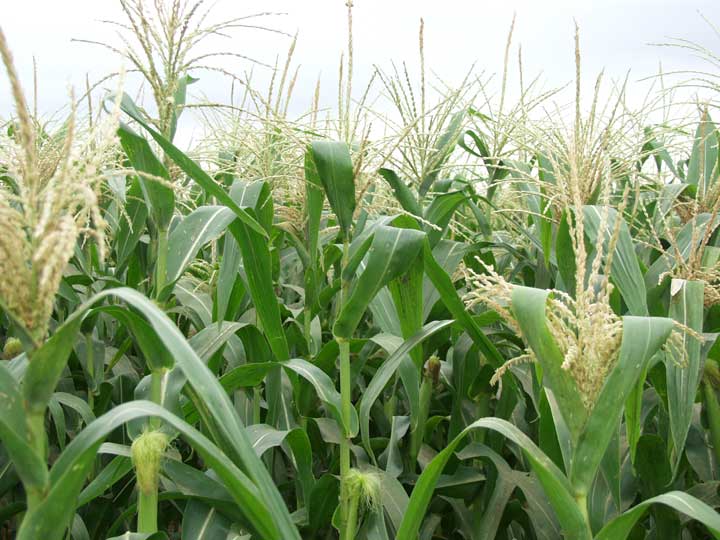
Popcorn field above in later summer, cobs are forming as the silk has been ferilzed by pollen. Each stalk usually has one cob. That cob will produce around a quarter cup of shelled popcorn.
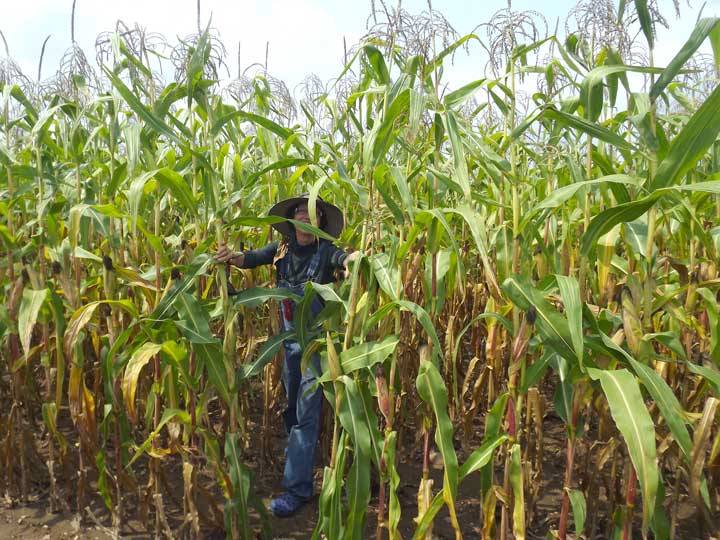
Note the green is fading to brown.
BACK PAGE ONE